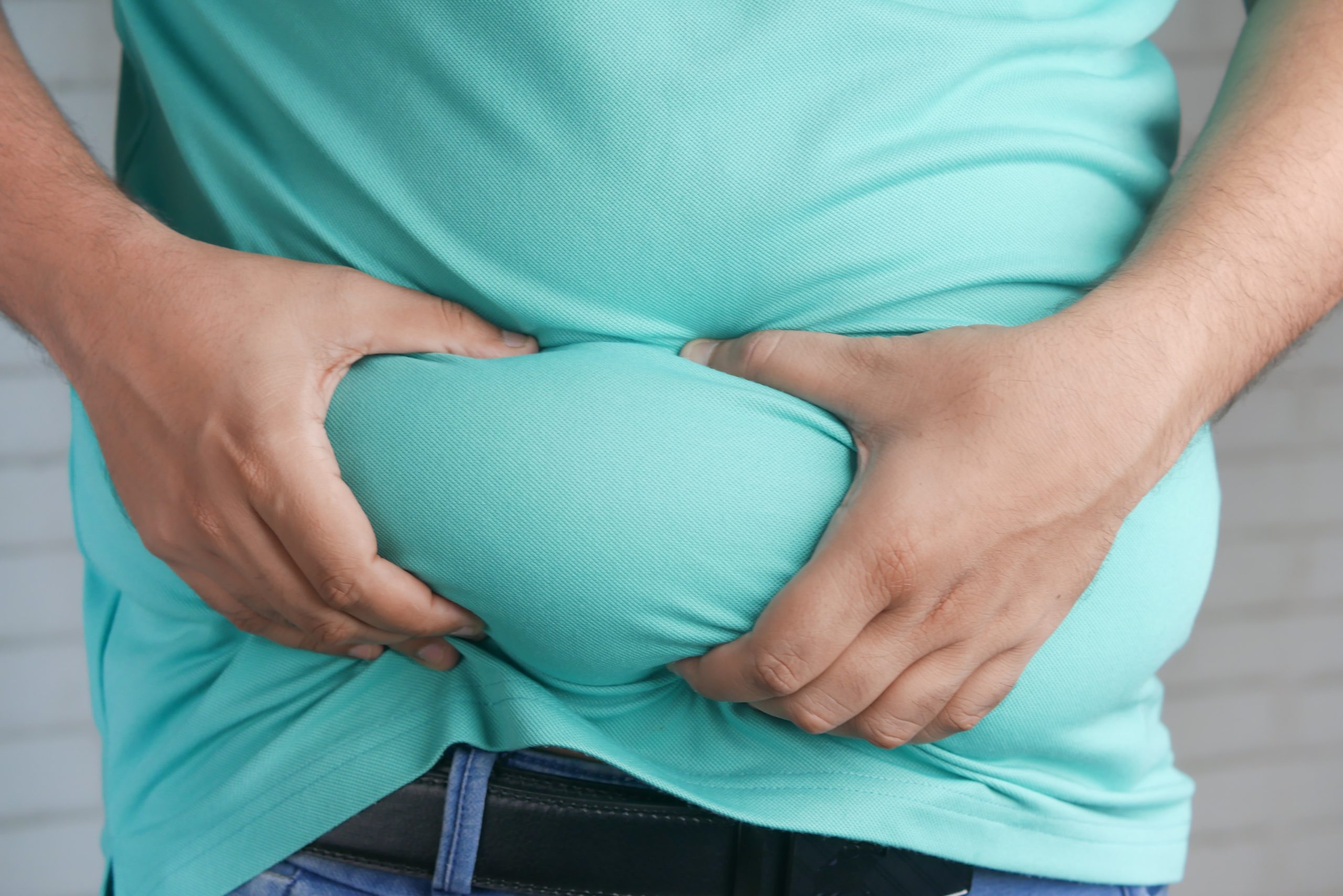Explaining the confusion between fat loss and weight loss
Fat loss and weight loss are two terms that are often used interchangeably, but they actually refer to different things. While both involve the reduction of body mass, there is a significant difference between fat loss and weight loss. Understanding this difference is important for setting realistic goals and achieving long-term success in your health and fitness journey. Weight loss refers to a decrease in overall body weight, including fat, muscle, bone density, and water weight.
It can be achieved through a variety of methods such as calorie restriction, increased physical activity or even dehydration. On the other hand, fat loss specifically targets the reduction of adipose tissue (body fat) while preserving muscle mass. This is typically done through a combination of healthy dieting and strength training exercises.
Understanding the Basics:
Fat loss and weight loss are two terms that are often used interchangeably, but they actually have different meanings. Weight loss refers to a decrease in overall body weight, which can be achieved through a variety of methods such as dieting, exercise or even surgery. On the other hand, fat loss specifically targets the reduction of body fat while maintaining muscle mass. It’s important to understand the difference between these two terms because it affects your approach to achieving your fitness goals.
For example, if you’re focused solely on losing weight without considering body composition, you could end up losing muscle mass instead of just fat. This can lead to decreased metabolism and ultimately make it more difficult for you to continue losing weight in the long run.To achieve fat loss effectively, it’s important to focus on a combination of proper nutrition and exercise.
Differentiating weight loss from fat loss

Losing weight and losing fat are two different things. While they may seem interchangeable, it is important to understand the difference between the two concepts. Weight loss refers to a decrease in overall body weight, while fat loss is specific to shedding body fat. It is possible for someone to lose weight without losing any significant amount of fat.
To differentiate between the two, it is essential to understand that muscle mass and water weight also contribute to overall body weight. Losing muscle mass or water can result in a drop in numbers on the scale but does not necessarily equate to fat loss. Fat loss, on the other hand, involves reducing body fat while maintaining lean muscle mass.By understanding this difference, individuals can tailor their approach towards achieving their desired results more effectively.
Weight Loss:
Weight loss is a common goal for many individuals, but it’s important to understand the difference between fat loss and weight loss. While they may sound similar, they target different areas of the body and have varying effects on overall health. Fat loss refers to the reduction of adipose tissue in the body. This type of tissue is responsible for storing excess energy in the form of fat cells, which can accumulate around organs and under the skin.
Fat loss occurs when there is a caloric deficit, meaning that an individual consumes fewer calories than their body needs to function. This forces the body to use stored fat as fuel, resulting in a reduction in overall body fat percentage.On the other hand, weight loss encompasses any reduction in overall body weight, including muscle mass and water weight. While losing weight may result in reduced adipose tissue, it can also lead to muscle mass depletion if not done correctly.
Bodyweight changes due to water, muscle, or fat
Bodyweight changes can occur due to many reasons, including water retention, muscle gain or loss, and fat accumulation or reduction. Out of these three factors, the most commonly talked about are fat loss and weight loss. Although these terms are often used interchangeably, they refer to different aspects of body composition.
Weight loss is a decrease in overall body weight and can be caused by a variety of factors such as dehydration from sweating or not drinking enough fluids, losing muscle mass due to inactivity or undernutrition, or even losing fat through proper diet and exercise. On the other hand, fat loss refers specifically to the reduction of adipose tissue in the body. This means that someone can lose weight but not necessarily lose any significant amount of fat.It’s important to differentiate between these two terms because while weight loss may look good on paper, it doesn’t always mean that an individual has become healthier.
Fat Loss:
Fat loss and weight loss are often used interchangeably, but they actually refer to two different things. While weight loss simply means a reduction in overall body weight, fat loss refers specifically to the reduction of body fat. Understanding this difference is important when it comes to achieving specific fitness goals. One reason why focusing on fat loss is more beneficial than simply trying to lose weight is that losing weight doesn’t necessarily mean you’re getting healthier.
For example, if someone loses 10 pounds by not eating enough or exercising excessively, they may have lost some muscle along with the fat. This can actually make them less healthy overall. On the other hand, by focusing on fat loss through a combination of strength training and healthy eating habits, you can improve your body composition and reduce your risk for health problems associated with excessive body fat.So how can you focus on losing body fat instead of just shedding pounds?
Losing body fat while preserving muscle mass
Losing body fat while preserving muscle mass is a goal that many people strive to achieve. While the terms “fat loss” and “weight loss” are often used interchangeably, it’s important to understand the difference between the two. Fat loss refers specifically to losing body fat, while weight loss can refer to any reduction in overall body weight, including water weight and muscle mass.
To achieve optimal results in losing body fat while preserving muscle mass, a combination of diet and exercise is key. Eating a balanced diet that includes lean protein, complex carbohydrates, healthy fats and plenty of vegetables can help support muscle growth while also aiding in fat loss. Additionally, incorporating strength training exercises into your workout routine can help preserve existing muscle mass while promoting new muscle growth.It’s important to note that losing body fat while maintaining or building muscle takes time and dedication.
How to Measure Fat Loss:
Fat loss and weight loss are two terms that are often used interchangeably. However, they have different meanings. Weight loss is simply the reduction in total body mass, which can be attributed to a variety of factors such as water retention, muscle loss, or fat loss. On the other hand, fat loss specifically refers to the reduction of body fat percentage. Measuring fat loss is important for those who want to get in shape and improve their health.
The most accurate way to measure fat loss is through body composition analysis. This method involves using specialized equipment that measures the amount of lean tissue (muscle) and fat tissue in your body. By tracking changes in your body composition over time, you can see how much progress you’re making towards your goal of reducing your overall body fat percentage.
Various methods of measuring body composition
Body composition is an essential aspect of health and fitness. It refers to the ratio of fat, muscle, water, and bone in the body. Many people focus on weight loss as a measure of their progress towards a healthier lifestyle, but it is vital to understand that weight loss does not necessarily mean fat loss. Fat loss is a more specific goal that focuses on reducing the amount of body fat while preserving lean muscle mass.
There are various methods for measuring body composition, ranging from simple techniques like skinfold measurements to advanced technologies like dual-energy X-ray absorptiometry (DEXA) scans. Skinfold measurements involve using calipers to measure the thickness of fat layers under the skin at different locations on the body. This method is relatively inexpensive and easy to perform but has limitations in accuracy and consistency between testers.Another popular method for measuring body composition is bioelectrical impedance analysis (BIA).
Conclusion about Difference between fat loss and weight loss
When it comes to fitness and health, the terms “fat loss” and “weight loss” are often used interchangeably. However, there is a significant difference between the two. Understanding this difference can help you achieve your fitness goals more effectively. Weight loss refers to a decrease in overall body weight, which can be achieved through losing fat as well as muscle mass and water weight. On the other hand, fat loss specifically targets losing body fat while preserving muscle mass.
This is important because losing muscle mass can lead to negative effects on metabolism and overall health.It’s important to note that focusing solely on weight loss may not necessarily result in achieving your desired body composition. Losing weight without targeting fat loss may leave you feeling weak and flabby rather than lean and toned. Therefore, incorporating targeted workouts along with a healthy diet can help you achieve long-term success in both fat loss and overall health goals.
Choosing the right approach for your goals
When it comes to weight loss, many people mistakenly believe that the terms “fat loss” and “weight loss” are interchangeable. However, there is a significant difference between the two. Weight loss refers to any reduction in body mass, while fat loss specifically targets the reduction of adipose tissue or body fat. This means that an individual can lose weight without necessarily losing much body fat.
If your goal is to achieve a leaner physique and reduce your overall body fat percentage, then focusing on fat loss rather than just weight loss should be your priority. The best approach for achieving this will depend on a variety of factors such as your current fitness level, dietary habits, and lifestyle preferences.One effective approach to reducing body fat is through strength training combined with proper nutrition. Strength training helps build muscle mass which in turn increases metabolism and helps burn more calories at rest.




